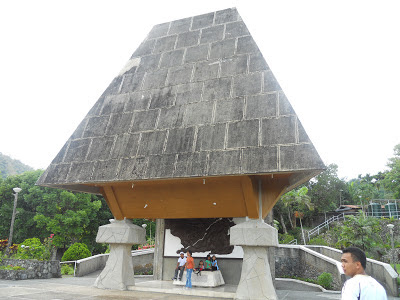In the north of Luzon, the largest island of the Philippines, high in
the mounatains of Cordillera Central, lies the heartland of the
Philippine indigenous peoples. Of these, the province of Ifugao has
gained renown far past its borders: for the unshakeable tenacity of
the Ifugao peoples' ways of life in the face of wave after wave of
incursions, over centuries; and more recently, for the recognition of
their legendary rice terraces as a UNESCO World Heritage Site.
The rice terraces and their communities are bound together in a complex system of social relations, rituals and spiritual practices, agriculutral ecosystems, seasonal cycles, ancestral skills and knowledge, intricate geo-engineering, land management, pest control, and sheer hard work that together have produced some of the most resilient societies on Earth. Over hundreds of years they fought off or absorbed Spanish conquest, American colonialism, and Japanese invasion, experiencing each in ways quite distinct from the rest of the country and emerging with their Ifugao identities intact; altered, perhaps, but still fundamentally their own.
I travelled there as part of a research team, studying how that
resilience could be still improved. Why? Because today a new set of
challenges has encroached on these mountains, more insidious than all
the precedents combined. As of the twentieth century, the
globalization of the capitalist world order has penetrated Ifugao;
and its implications for life there, whether physical or social,
climatic or spiritual, are weaving complex, confounding new threads
into these venerable livelihoods and landscapes.
Threats and opportunities; continuities and change; adaptation and
courage; Ifugao's situation in may ways mirrors that of the indigenous peoples of Guyana, on
the opposite side of the Earth. And just as with them, we would do
well to look from the other side of the equation, and respect and
learn from a civilization that can still assert itself, intact and
with dignity, where many others have not been so fortunate. What have the Ifugao retained that is lost
to those nations which, boasting of "development", have
scarcely yet realized what it has cost them?
The remoteness of the Ifugao highlands was apparent just in the
ordeal of getting there. After my colleague's Serbian passport broke
the immigration computer system in the Ninoy Aquino International
Airport, Manila, it was an all-day trip by road up through the home
provinces of Pampanga and Tarlac, the ricefields of Nueva Ecija, and
the forests and hills of Nueva Vizcaya. We arrived in Ifugao well
after midnight, whereupon our drivers got lost, and we staggered into
our first destination – Banaue – at three in the morning.
However, the opening of flights to a nearby airfield should make
Ifugao more accessible in due course, especially for travellers and
tourists. These tourists are a major theme in Ifugao's present-day
challenges and opportunities, and it is my hope that this forthcoming
series of posts will encourage you to go there for yourself, and
offer you advice in this regard; just as it reminds you of the epic
story you join as a character if you do so, and of the contingency of
your role therein on your own choices.
This series, to be updated over the next few weeks, will cover a
range of themes across a small handful of Ifugao's communities. The
province is diverse, with each portion having its own distinct
culture and grappling with challenges unlike the others'.
Unfortunately there was no prospet that a single research trip could
cover all of them; but those looked at here stand out among Ifugao's
most iconic. Such as Banaue, the ground zero of tourism...
...Batad, also in Banaue municipality, the secluded rice terrace
amphitheatre town...
...and above all: Kiangan. A historical centre, not only for Ifugao,
as the first of its towns...
...but for all of East Asia, as the site where World War II came to
an end in the Philippines.
And as if there was not enough astonishment to be found on Kiangan's
surface, what secrets await 100 metres beneath it?
Watch this space for much, much more to follow on one of the most
enduring indigenous civilizations in the world, beginning with the
hundreds of years of high history that resonates in Kiangan to this
day.












No comments:
Post a Comment